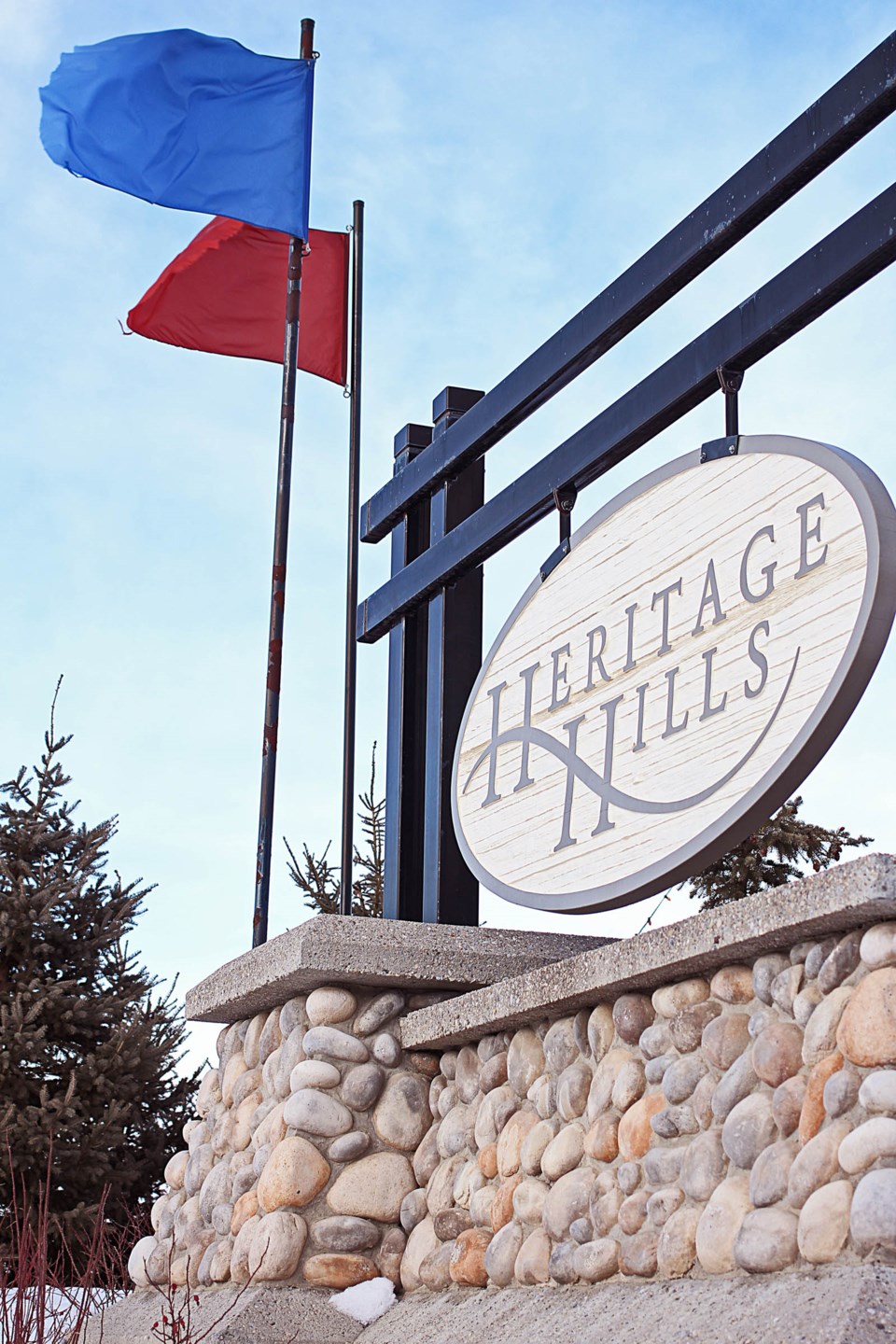Cochrane town council has deemed the new Heritage Hills Neighbourhood Plan safe for development.
Key elements of the plan include: dispersed green spaces, a school site, an environmental reserve, an area for centralized local commercial retail services, a variation of land use districts allowing multiple housing forms, pedestrian pathways, and linear parks.
Council’s concerns over the new development stem from the fact that some properties would be placed on slopes in the area.
“There’s so much about this plan I like – I like the range of housing options, the connectivity, the school. There’s so much that I like. What I’m having trouble working through, and getting into a comfort zone, is slope development in Cochrane,” said Councillor Tara McFadden.
McFadden referenced issues within GlenEagles, Bow Ridge, and Benchlands as reasons to be hesitant with the new plan.
The GlenEagles community in Cochrane, which is built on slopes, has been facing challenges for a number of years regarding cracking foundations, leaky basements, and collapsing retaining walls. All of these issues relate to the movement of the slopes due to too much water in the soil.
The Bow Ridge community also experienced problems when retaining walls started to fail and shift.
Mayor Ivan Brooker pointed out the difference between those plans and this one is Heritage Hills doesn’t use a retaining wall, which is what failed in Bow Ridge and GlenEagles.
Council was initially presented the plan on Nov. 23, 2015 when it chose to defer due to lack of information regarding development within the slopes.
According to a report by Candace Banack, senior planner for the town of Cochrane, on Jan. 25 a strategic session was held with council regarding slopes in Heritage Hills. During the strategic session, both the developer’s and town’s geotechnical consultants were in attendance to present information about the slope analysis completed for Heritage Hills.
“The intent of the strategic session held with council was to provide further clarification on the evaluation of slopes within the plan area, specifically how the plan compares to slope policies in the Land Use Bylaw, as well as a discussion around the slope reporting completed by the developer’s consultant,” the report stated.
Councillor Jeff Toews said more research has been done for this plan than any other in the past. He worried about protecting homeowners should anything happen regarding the slopes after the houses are purchased.
“My concern is I want to protect ourselves in the future financially, and I want to protect future homeowners and their investment,” Toews explained.
He suggested some policy be written into the plan holding the developer responsible for the land in the area two years after the last home is built. The developer explained it doesn’t warrantee homes so it was hesitant to agree to that condition.
Councillor Gaynor Levisky asked whether precedence had been set in other communities for the developer to offer an insurance policy for the land for a certain time period. The developer explained that would be a large burden because it would delay the return on the capital investment and that the work it did with the town for this process has been well beyond what is normal for a project like this.
Watson suggested council approve the plan with the addition of caveats as he believed all councillors liked its general lay out. He suggested the caveats focus on protection of slope and transportation, which would then be addressed when it came to council again for the land use.
Toews made a motion to adopt the plan with the addition of an appendix addressing their concerns regarding slope safety and transportation. The motion was carried unanimously.




